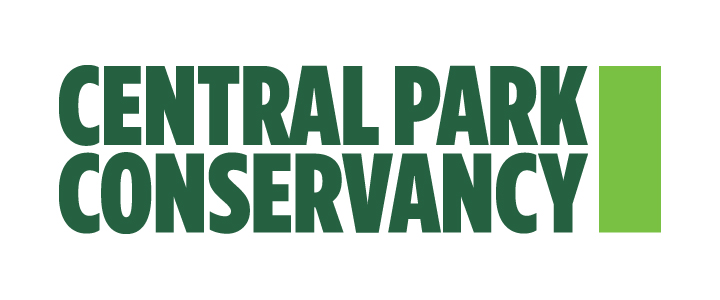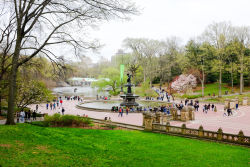Central Park
The Daily Plant : Monday, February 9, 2004
CENTRAL PARK'S SECRET HISTORY
An important part of New York City’s African-American heritage lies hidden in Central Park’s murky pre-history. Although it’s difficult to imagine a time when the 843 acres between 59th and 110th was not beautiful parkland, Central Park was once private property, occupied by a variety of businesses and residences, including an African-American neighborhood called Seneca Village. Located between 82nd and 89th Streets and Seventh and Eighth Avenues, Seneca Village was New York City’s first prominent African-American community, and its destruction displaced over 250 land-owning African Americans. Seneca Village was never re-established in another location, and its demolition is considered one of the great casualties of Central Park’s creation. To memorialize Seneca Village, Central Park’s Dana Discovery Center has been displaying a photographic exhibit of Seneca Village and its artifacts. The exhibit will run through the end of February, Black History Month (Tuesday through Sunday, 10:00 a.m. to 4:00 p.m.).
Seneca Village was established in 1825 when well-to-do African-American New Yorkers began to buy parcels of land in the northern climes of Manhattan. The remote location of the land made it affordable to newly employed African-Americans, and a nearby natural spring provided the fresh drinking water necessary for a new community. The African Methodist Episcopal Zion Church, then described as the "the largest and wealthiest church of colored people in this city, perhaps in the country," also bought land in Seneca Village. Within a few years, the community developed into a stable settlement of over 250 working-class people, with African-Americans owning more than half the households in the village. In a time when land ownership allowed a man to vote, the success of Seneca Village was both politically and culturally significant.
By the 1840s, Seneca Village had become a multi-ethnic community of African Americans, Irish, and German immigrants. There were three churches, two African Methodist and one Catholic; a school—Colored School No. 3, one of the few integrated schools in the city; and several cemeteries. The origin of Seneca Village’s name is still uncertain. Some historians believe that the village was named after the Seneca tribe of Native Americans, while others believe it was derived from a distortion of the country-name "Senegal," where many of the village’s residents may have come from. The word "Senegal" may also have been a code word used by Underground Railroad fugitives, or named in homage to Roman philosopher Lucius Annaeus Seneca, whose book, Seneca’s Morals, was popular among African American activists.
Seneca Village met its early demise in 1856, when the state legislature made use of Eminent Domain, a newly created law. Eminent Domain, which has shaped much of New York City, allows the government to seize private property for public purposes. To create Central Park, 1,600 people were ordered to vacate the land from 59th to 106th Streets, between Fifth and Eighth Avenues. Although land-owners were compensated for their property, there was naturally a great uproar in Seneca Village and the issue was widely debated in the newspapers. Those in favor of the creation of Central Park characterized Seneca Village as a wasteland, populated by squatters and shanty-dwellers. Although this was an accurate description of some portions of the seized property, it was an unfair description of Seneca Village’s vibrant community, filled with hard-working, tax-paying residents.
The residents of Seneca Village scattered throughout the city, never establishing themselves as a community elsewhere. Over the years, its existence was forgotten and the story of Seneca Village went largely untold. In 2001 the Central Park Conservancy put up a plaque commemorating it. Today, historians are studying Seneca Village, and the Central Park Conservancy’s exhibit highlights their recent efforts. The exhibit, as well as the continuing efforts of the Central Park Conservancy to uncover the pre-history of Central Park, remind New Yorkers that all public works come at some private cost.
Written by Hannah Gersen
QUOTATION FOR THE DAY
"If a man hasn’t discovered something that he will die for, he isn’t fit to live."
Martin Luther King, Jr.
(1929-1968)
Check out your park's Vital Signs
Clean & Safe
Green & Resilient
Empowered & Engaged Users
Share your feedback or learn more about how this park is part of a
Vital Park System

Know Before You Go
Anticipated Completion: Spring 2024
Anticipated Completion: Spring 2025

Contacts
Central Park Information: (212) 310-6600
Central Park Information (for the Hearing Impaired): (800) 281-5722
Belvedere Castle, The Henry Luce Nature Observatory: (212) 772-0210
The Charles A. Dana Discovery Center: (212) 860-1370
The Dairy Visitor Center and Gift Shop: (212) 794-6564
North Meadow Recreation Center: (212) 348-4867
Loeb Boathouse (Bike rentals, boat rentals & gondolas): (212) 517-2233
Carousel: (212) 879-0244
Fishing at Harlem Meer (Catch & Release): (212) 860-1370
Harlem Meer Performance Festival: (212) 860-1370
Horseback Riding - Claremont Stables: (212) 724-5100
Metropolitan Opera (Performances on the Great Lawn): (212) 362-6000
New York Philharmonic (Performances on the Great Lawn): (212) 875-5709
Shakespeare in the Park - The Public Theater at the Delacorte Theater: (212) 539-8655
Central Park SummerStage: (212) 360-2777
Swedish Cottage Marionette Theater: (212) 988-9093
Tennis: (212) 280-0205
Weddings, Ceremonies and Photography at the Conservatory Garden: (212) 360-2766
Wildlife Center & Tisch Children's Zoo: (212) 439-6500











